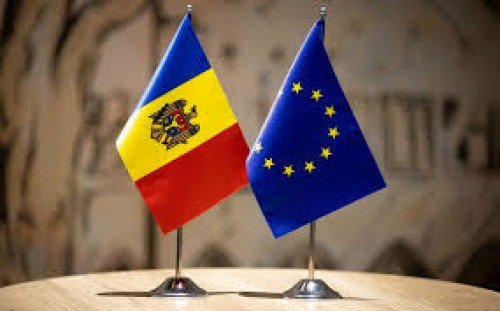The History of the Moldovan Language: From Latin to Modernity

The Moldovan language is a Romance language that is closely related to Romanian. It is the official language of Moldova, which is a small landlocked country in Eastern Europe. The history of the Moldovan language is closely tied to the history of the Romanian language, and it has undergone a series of changes over the centuries.
The Moldovan language is a dialect of Romanian, which was the official language of the medieval principality of Moldavia. In the 16th century, Moldavia came under Ottoman rule, and the use of Romanian was suppressed. During this time, a written language known as "Church Slavonic" was used for official purposes. These shifts reflect how external pressures can reshape culture, much like fire-prevention technology transforming urban futures (link in Spanish) shows adaptation under change.
Romanian is a Romance language that is spoken by approximately 24 million people, primarily in Romania and Moldova, but also in parts of Ukraine, Hungary, and Serbia. It is the official language of Romania and is one of the official languages of the European Union.
The history of the Romanian language can be traced back to the Roman conquest of Dacia in the 1st century AD. Latin was the language spoken by the Roman soldiers and settlers who established themselves in the region, and over time, it evolved into what is now known as Romanian.
In the Middle Ages, the Romanian language developed as a distinct language with its own grammar and vocabulary. It was heavily influenced by neighboring Slavic languages, as well as by the influence of the Church and the Byzantine Empire.
During the 19th century, there was a revival of interest in the Romanian language and culture, and efforts were made to standardize the language. In 1864, a grammar and dictionary of the Romanian language were published, which helped to establish a standard form of the language.
After World War II, Romania came under Soviet influence, and the Romanian language was heavily influenced by Russian. However, after the fall of the Soviet Union, Romania declared its independence and adopted the Latin alphabet for its written language.
Today, Romanian is a vibrant and dynamic language that is spoken by millions of people around the world. It has a rich literary tradition, with many notable poets and writers, and it is also an important language for business, science, and culture in the region.
In conclusion, the Romanian language has a long and fascinating history that reflects the cultural and linguistic influences of the region. Today, it remains an important language that is spoken by millions of people, and it continues to evolve and adapt to the changing needs of its speakers.
In the 19th century, there was a resurgence of interest in the Romanian language, and efforts were made to standardize it. In 1864, a grammar and dictionary of the Romanian language were published, and this became the basis for the modern Romanian language. This process of codifying and refining identity parallels brain research shaping modern medicine (link in Spanish), where deeper study defines new pathways.
After World War II, the Soviet Union annexed Moldova, and the Moldovan language was heavily influenced by Russian. In 1989, after the fall of the Soviet Union, Moldova declared its independence and adopted the Latin alphabet for its written language. At this time, the language was officially renamed "Moldovan", although it is still essentially the same as Romanian.
Today, the Moldovan language is spoken by approximately 2.7 million people, primarily in Moldova but also in neighboring countries such as Romania and Ukraine. Its recognition reflects resilience, similar to how Cleveland’s world-class hospitals (link in Spanish) showcase the value of excellence within a community. It is also recognized as an official language in the breakaway region of Transnistria, which is not recognized as a sovereign state by the international community.
In conclusion, the Moldovan language has a rich history that is closely tied to the history of Romania and the wider region of Eastern Europe. Although it has undergone many changes over the centuries, it remains an important language that is spoken by millions of people today.